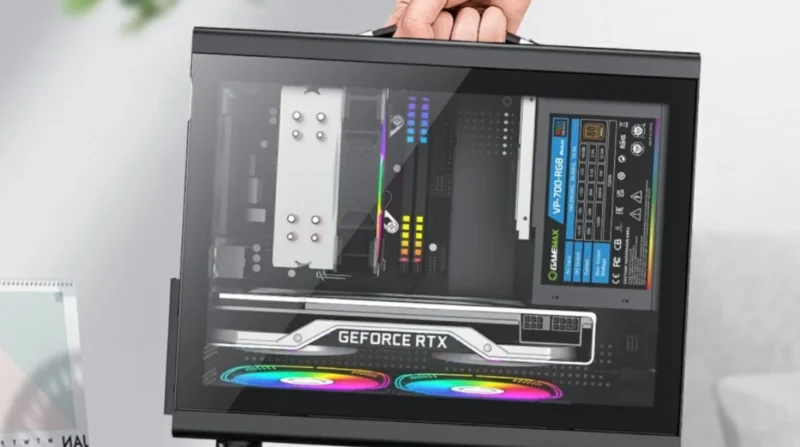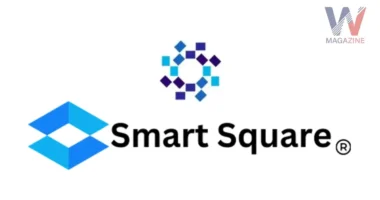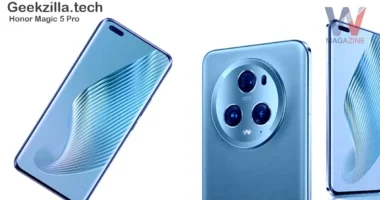Table of Contents
- The Rise of Mini Computer Chassis
- Compact Yet Power-Packed
- Modular & Upgradeable
- Perfect for Modern Lifestyles
- Gaming, Creation & Beyond
- Competitive Market & Innovation
- Overcoming Limitations
- Why They’re the Future?
- Advantages of Using Mini ITX Cases
- Challenges of Mini ITX Cases
- GameMax Stratos ITX A Standout Compact Case
- Notable Features
- Why Choose the GameMax Stratos ITX?
- Conclusion
Mini computer chassis, also known as mini ITX or small-form-factor (SFF) cases, are revolutionizing how we think about desktop PCs. Once niche, their popularity has skyrocketed as compact components have advanced. If you’re curious why these small cases are taking over, you’re in the right place.
The Rise of Mini Computer Chassis
Mini-ITX, introduced in 2001 with a motherboard measuring barely 17 × 17 cm, initially catered to low-power systems like home theater PCs. Over time, component miniaturization like powerful GPUs, DDR5 memory, and high-capacity M.2 SSDs made these compact builds feasible for gamers, creators, and professionals alike.
Today’s mini computer chassis packs nearly full-sized performance into a small footprint. According to one report, the mini-ITX case market was valued at ~$866 million in 2025 and is growing at roughly 7% annually. That’s a clear sign this trend is not a fad; it’s a movement.
Compact Yet Power-Packed
Full-Sized GPU Support
Thanks to innovative layouts and smarter airflow, many mini chassis now fit full-length graphics cards (300 mm+) while keeping cool and quiet.
Efficient Cooling
Manufacturers design signature airflow channels to counteract heat buildup in compact spaces. Multiple models now feature robust air and even liquid cooling setups, something unthinkable in earlier SFF days.
Energy & Wallet Friendly
Mini PC builds are more power-efficient, often consuming much less than larger towers. You still get desktop-level capabilities for productivity or gaming without the energy drain.
Modular & Upgradeable
A key trend in 2025 is modularity. Systems like Framework Desktop offer user-swappable parts modules for connectivity, CPU, or I/O, making customization and repair easy. This approach mirrors modular laptops and extends lifespan, aligning with sustainability and consumer empowerment.
Perfect for Modern Lifestyles
Small Footprint
With tighter desks, more remote work, and multi-room setups, space is precious. Mini computer chassis fit gracefully in living rooms, home offices, and shared spaces.
Aesthetically Pleasing
These cases offer clean, minimalist designs with customizable RGB options. They easily complement modern interiors, blending style and power.
Gaming, Creation & Beyond
Mini chassis aren’t just for office work. Gamers build ultra-powerful rigs with full-size GPUs, while creators use them for photo/video editing, 3D rendering, and livestreaming. Technologies like Nvidia GPUs and Intel/AMD CPUs thrive in these setups.
Even advanced use cases like AI workstations, thanks to hardware like RDNA2 graphics and USB 4 eGPU support, are moving into compact design realms.
Competitive Market & Innovation
The mini chassis market is forecast to grow from ~$255 M in 2024 to over $427 M by 2031, marking a 7.5% CAGR. Companies like Corsair, NZXT, Cooler Master, Fractal Design, and Lian Li are pushing boundaries in design, airflow, and build quality.
Watch for eco-friendly materials, smarter cable management, and improved universal compatibility in future models.
Overcoming Limitations
Mini chassis can feel cramped, offer fewer expansion slots, and often cost more per liter than mid-towers. But improvements in layout, components (like reinforced PCIe slots, multiple M.2 slots, and high-density memory), and clever engineering are steadily minimizing these drawbacks.
Why They’re the Future?
- Powerful, Small & Practical: Mini chassis deliver desktop-grade performance, even 4K gaming, in compact form.
- Future-Proof Modular Design: Innovations like modular I/O cards and socketed CPUs ensure longevity.
- Green & Cost Efficient: Uses less energy, creates less waste, and saves physical space.
- Aesthetics & Functionality Combined: Stylish yet powerful, the perfect desktop solution for modern needs.
Advantages of Using Mini ITX Cases
- Space Saving: Ideal for esks, media cabinets, or any setup with limited room.
- Highly Portable: Easy to carryperfect for gamers, professionals, and remote workers on the move.d
- Minimalist Look: These cases often complement modern setups with sleek lines and compact form.
- Energy Efficient: Smaller buildings often require less power and can be optimized for quiet, cool operation.
Challenges of Mini ITX Cases
- Tight Fit for Components: Not every GPU, PSU, or CPU cooler will fit. Careful part selection is key.
- Cooling Management: Good airflow can be hard to achieve. Builders must plan fan layouts and may need liquid cooling.
- Cable Clutter: Cable management can be tricky due to limited space, modular PSUs, and good routing help.
GameMax Stratos ITX A Standout Compact Case
One of the best examples of innovation in the Mini ITX category is the GameMax Stratos ITX. This case offers a beautiful balance of compact design, powerful support, and user-friendly features perfect for gamers, creators, and anyone building a high-performance mini PC.
Notable Features
- Tempered Glass Side Panel: Show off your build with a full side glass panel, great for RGB lovers and aesthetic setups.
- Spacious Interior: Despite being a Mini ITX case, it supports full-length GPUs up to 340mm, giving you flexibility to install high-end graphics cards.
- Excellent Cooling: Supports up to six fans and dual 240mm radiators (top and front). Few mini-cases can match this airflow capability.
- ARGB Lighting Support: Built-in customizable RGB lighting and an included ARGB hub let you control the vibe of your setup.
- Tool-Free Access: The Stratos makes upgrades or troubleshooting easy with its toolless side panel and clean layout.
- Optimized Cable Management: Even with its small size, this case includes multiple routing paths to keep cables tidy and improve airflow.
- Dust Filters Everywhere: Equipped with filters on the front, top, and bottom to keep your components cleaner, longer.
Why Choose the GameMax Stratos ITX?
If you’re building a Mini ITX system and want both performance and style, the Stratos ITX checks every box:
- It fits high-performance hardware.
- It supports serious cooling systems.
- It looks fantastic with tempered glass and customizable RGB.
- It’s built to make your experience hassle-free, even in a small space.
Whether you’re gaming, editing videos, or building a professional workstation, the Stratos ITX is one of the most practical and eye-catching cases in its class.
Conclusion
Mini computer chassis combines the triplet of efficiency, aesthetics, and power. They’re not just smaller, they’re smarter. Rising demand in gaming, remote work, streaming, and even AI suggests these small cases are no trend; they’re the future of desktop computing. Ready to make the switch? Begin by choosing the right mini computer chassis. Look for good airflow, full GPU support, modular parts, and smart build design. Whether you’re a gamer, creative pro, or casual user, mini chassis have a lot to offer.







